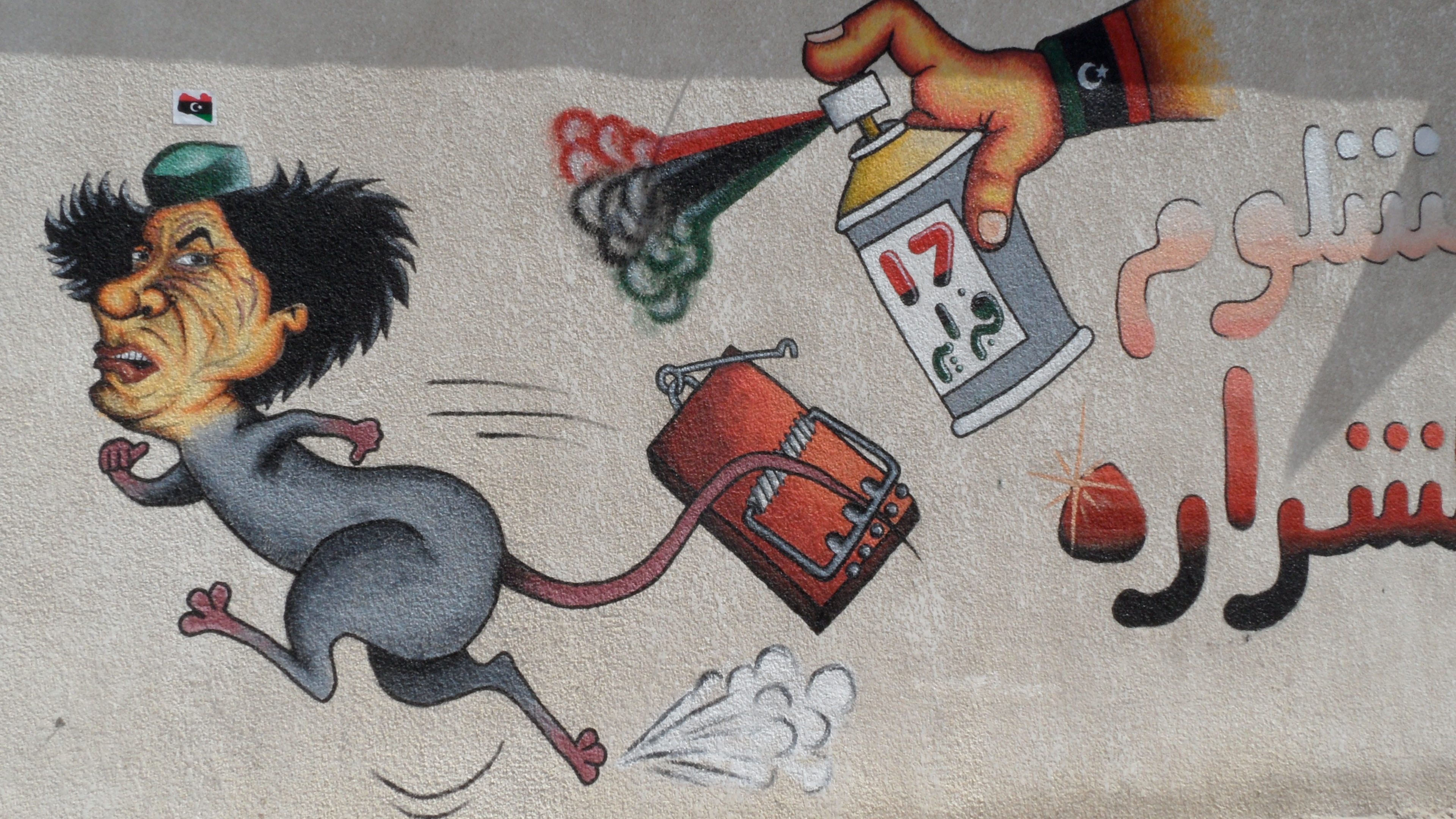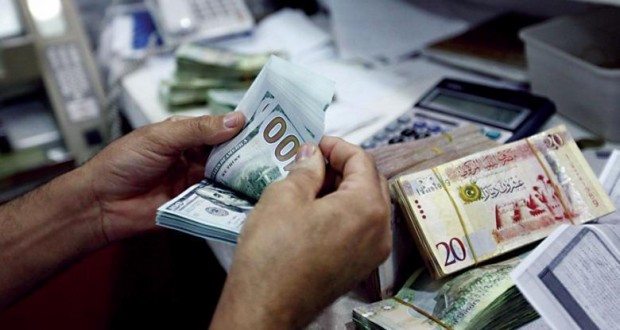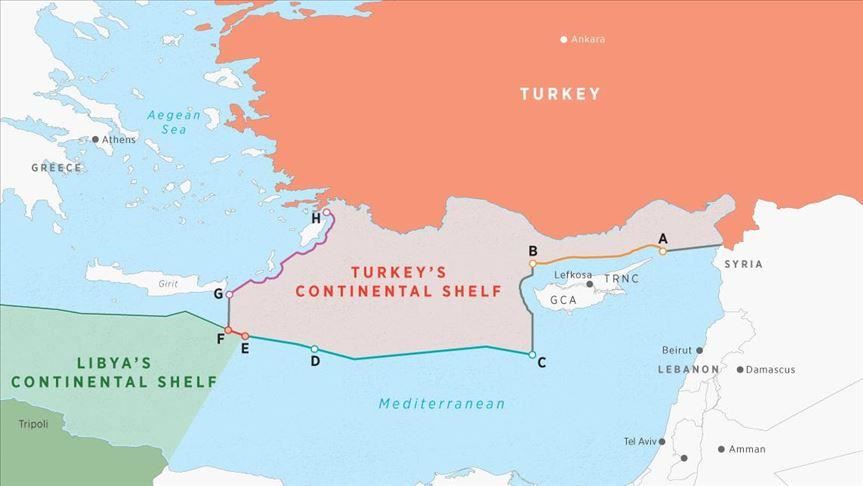Requiem for a revolution: Libya five years on
Published on 2016 February 22, Monday Back to articles
Qadhafi Graffiti Rat (c) Jill Dougherty, CC 3.0
On 17 February, Libyans held only quiet celebrations to mark the fifth anniversary of the revolution that overthrew Qadhafi. Many now look upon the last five years with an unprecedented level of bitterness. Our Libya Politics & Security author takes the opportunity to give her view of where the country now stands, and what the future might hold.
There is a widespread acceptance that the euphoria that characterised the first two years of the post-Qadhafi era had blinded many Libyan leaders to the daunting challenges and festering divisions that would ultimately stymie Libya’s efforts to achieve democracy, at least in the near term.
A deep depression hung over the collective Libyan psyche on 17 February, as people mourned the fact that around 4,700 revolutionaries had sacrificed themselves during the eight-month revolution, seemingly for nothing except worse days than even those seen under the dictator.
In October 2011, when the end of the war was officially announced mere days after Qadhafi was killed in Sirte, the tri-colour flag that had preceded the all-green Jamahiriya flag became largely ubiquitous around the country.
Now, white flags are flown in Zuwara, underscoring locals’ desire for an end to war. The distinct black flag of Islamic State (IS) flies in Sirte, and the outskirts of Benghazi, Derna, and Sabratha. In other areas of the country, including on occasion in Bani Walid, the Jamahiriya flag flies once more, a symbol of the growing feeling in Libya, even among the most ardent and early supporters of the revolution, that perhaps it was all a mistake.
Qadhafi’s own atrocities – torture, rape, public executions, and assassination campaigns against opposition leaders in exile – seem to pale in comparison to IS’ crimes every day.
The knot of Libya’s many problems appears impossible to untangle. Empowered militias, unaccountable to any state, roam the country. They often supplement their salaries, which they still receive from the Central Bank in Tripoli, with criminal activity. The terrorist threat has only become more complicated as Al-Qa’ida, IS, and other terrorist groups have been drawn to Libya for both a safe-haven and a frontline.
National identity has almost completely broken down. Libya’s economy has become one of the fastest-shrinking in the world. Outside interference, supporting one side or another in the civil war, only serves to intensify every one of these challenges, rather than tipping the balance in favour of one side. International support to Libya has dwindled in the absence of a unified government. The crisis in Libya has also to compete with other regional catastrophes, like the devastating wars in Syria and Yemen, for international donor and diplomatic attention.
The solutions to these challenges – including demobilisation and re-integration programmes for militias, security sector reform, counter-terrorism support, comprehensive national reconciliation programmes, and public financial management – will take years to see any signs of success, even in peaceful circumstances. The longer it takes to get a unified government, and a basic level of security around the country, the longer it will take to see progress on democratic transformation or economic development.
Libya’s future now lies with its warring factions, and their efforts in the coming weeks to fully establish the nascent unity government that arguably offers Libya’s final chance for recovery. There are those who see the damage as being too great, or the solution as being too late. But the implications of the alternative – national disintegration – may just be horrendous enough to compel a solution.
This is an excerpt from an article in our monthly Libya Focus publication.



